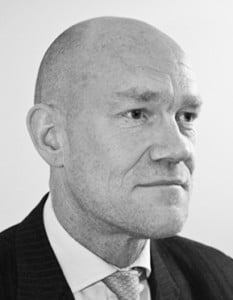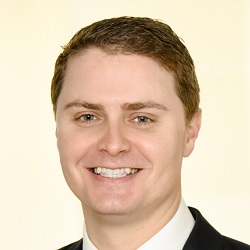Artesian Law, the barrister-led legal disciplinary practice, is set to double in size after 18 months in business by actively recruiting associate members in order to expand beyond its mainstay of criminal legal aid work.
Speaking at Wednesday night’s Legal Futures’ New business models for the Bar event in London, James Nicholls, Artesian’s solicitor partner, who with six barristers and a practice manager launched the firm in March 2012, said it had built up a “thriving” employment law practice in less than a year.
He went on that having “consolidated our first 18 months of practice”, Artesian was now “actively recruiting associates with backgrounds in crime, family, employment and litigation”. Up to a further 10 associates would assist Artesian’s growth strategy, he said.
Commenting on the flexibility brought by the firm’s ‘hub’ model, around which the seven partners and four associates are supported by Artesian in running their own practices – in terms of administration, practice compliance procedures, and individual internet marketing – he said: “We feel confident that we can adapt the model we have to cater for both different disciplines and different people.”
But the business model was capable of shrinking as well as expanding, according to the prevailing market. “We can adapt it, change it, add it, or reduce it in tune with what’s happening in the legal services market, in tune with where we want to direct our marketing and what work we want to retain,” he explained.
Mr Nicholls said Artesian had begun the process of diversifying. Its employment law practice was thriving after just 10 months, he said. Although the partners had all come from a criminal legal aid background, taking on suitably qualified associates had helped to bring in new expertise, such as in commercial litigation.
He said that Artesian had been “fortunate to be able to start with a blank canvas”. The Solicitors Regulation Authority-authorised practice had very low overheads, including serviced offices, sophisticated IT, and a management structure drawn from the partners. Although barrister-led, with a solicitor partner it was in direct competition with solicitors’ firms, he said.
He described Artesian as “like [the fixed price commercial law business] Riverview Law, only smaller”. Speaking earlier, Riverview’s chief operating officer, Adam Shutkever, had described solicitors firms as “hamstrung, locked into very high cost bases, high people costs, high property costs, and they’ve got no capital cushion – so a very very bad place to be”.
Mr Nicholls said: “In comparison to the traditional chambers model, [at Artesian] there are no papers piled high, there are no expensive offices to maintain, there are no rooms full of administrative personnel, and nor are there any chambers executives.”
Referring to the firm’s personnel, he said: “Among the associates who have joined us we have a QC, a solicitor who works part-time, one who works on a case-by-case basis, so the word full-time doesn’t apply to us – everybody is self-employed. The members of the Bar that work with us are for all intents and purposes self-employed practitioners, but for [regulatory] purposes they are employed barristers.”
A central idea behind Artesian was that “we want practitioners to move away from the traditional solicitor referral route”, he added. The firm had a “unique position” in that it could accept direct instructions from the public under the firm’s banner, while advocacy and litigation services could be undertaken on a case discretely, without duplicating costs to clients.
He claimed that the Bar’s direct access scheme was more suited to “commercial clients who have the litigation experience and the legal resources to conduct their work that way on their own behalf.” But it might not be suitable for “members of the public who have no legal experience and don’t know the law”, who require “a degree of hand-holding”.
He questioned whether barristers – who are due to acquire litigation rights from the Bar Standards Board next year – were properly set up for dealing with members of the public. “Does a sole practitioner really want to be involved in that… degree of client care?,” he asked.















Leave a Comment